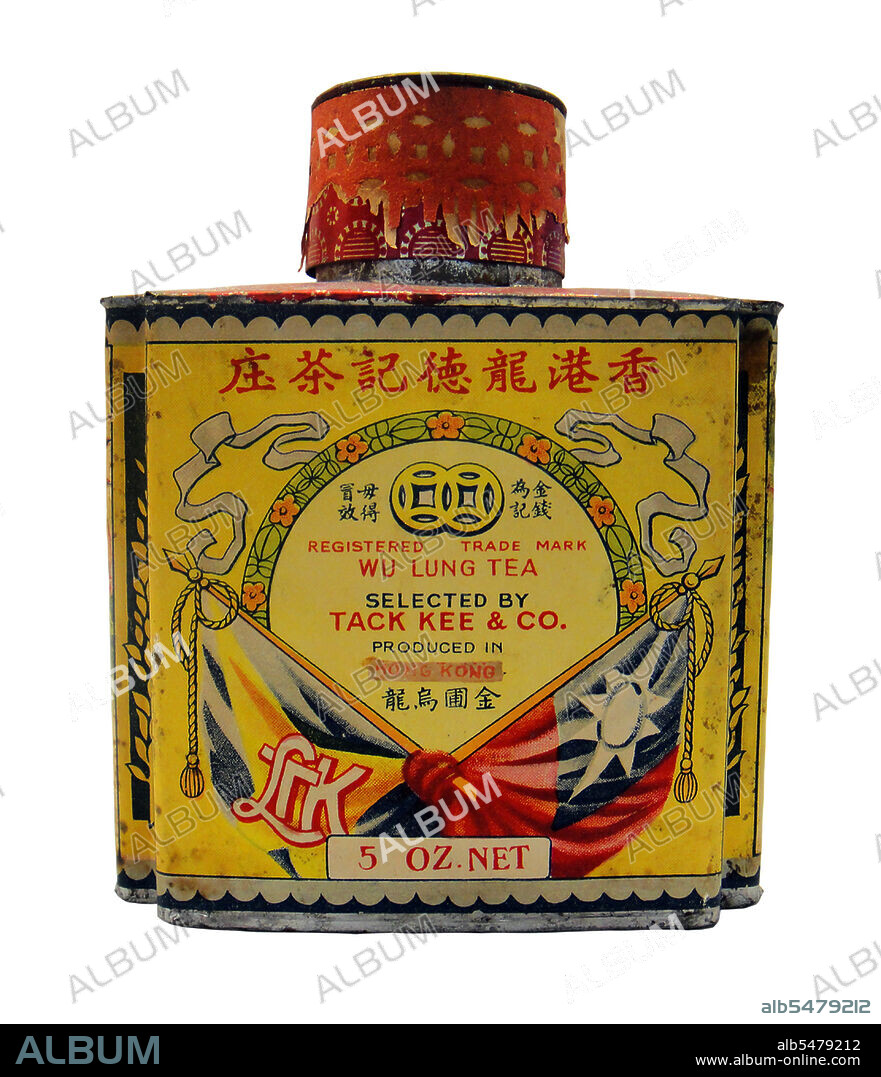alb5479212
A vintage tin of Wu Lung (Oolong) Tea produced by Tack Kee and Company, Hong Kong, late 19th century.

|
Add to another lightbox |
|
Add to another lightbox |



Title:
A vintage tin of Wu Lung (Oolong) Tea produced by Tack Kee and Company, Hong Kong, late 19th century.
Caption:
Oolong is a traditional Chinese tea (Camellia sinensis) produced through a unique process including withering under the strong sun and oxidation before curling and twisting. Most oolong teas, especially those of fine quality, involve unique tea plant cultivars that are exclusively used for particular varieties. This tea category is especially popular with tea connoisseurs of south China and Chinese expatriates in Southeast Asia, as is the tea preparation process that originated from this area: gongfu tea-making, or the gongfu tea infusion approach. Different varieties of oolong are processed differently, but the leaves are formed into one of two distinct styles. Some are rolled into long curly leaves, while others are 'wrap-curled' into small beads, each with a tail. The former style is the more traditional of the two. The name oolong tea came into the English language from the Chinese name, meaning 'black dragon tea.
Credit:
Album / Pictures From History/Universal Images Group
Releases:
Model: No - Property: No
Rights questions?
Rights questions?
Image size:
3850 x 4477 px | 49.3 MB
Print size:
32.6 x 37.9 cm | 12.8 x 14.9 in (300 dpi)
Keywords:
ADVERTISING • ART • ARTS • BOUTIQUE • CHANOYU • COMMERCE • ECONOMY • HISTORIA UNIVERSAL • HISTORIA • HISTORICAL • HISTORY • INFUSION • LEGEND • OOOLONG TEA • ORIENTALISM • POSTER ART • TEA CEREMONY • TEA PARLOUR • TEA ROOM • TEA SALON • TEA SHOP • TEA • TRADE • TRADING • WU LUNG TEA
 Pinterest
Pinterest Twitter
Twitter Facebook
Facebook Copy link
Copy link Email
Email

